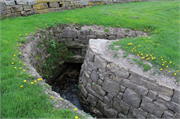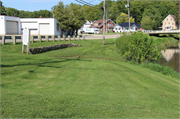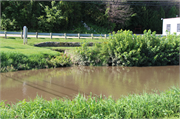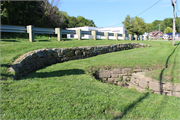Property Record
N SIDE OF RIVER ST, 50 FEET W OF SPRINT ST INTERSECTION
Architecture and History Inventory
| Historic Name: | Town Spring |
|---|---|
| Other Name: | |
| Contributing: | |
| Reference Number: | 80801 |
| Location (Address): | N SIDE OF RIVER ST, 50 FEET W OF SPRINT ST INTERSECTION |
|---|---|
| County: | Lafayette |
| City: | Darlington |
| Township/Village: | |
| Unincorporated Community: | |
| Town: | |
| Range: | |
| Direction: | |
| Section: | |
| Quarter Section: | |
| Quarter/Quarter Section: |
| Year Built: | 1836 |
|---|---|
| Additions: | |
| Survey Date: | 19762016 |
| Historic Use: | designed landscape feature |
| Architectural Style: | NA (unknown or not a building) |
| Structural System: | |
| Wall Material: | Stone - Unspecified |
| Architect: | |
| Other Buildings On Site: | |
| Demolished?: | No |
| Demolished Date: |
| National/State Register Listing Name: | Not listed |
|---|---|
| National Register Listing Date: | |
| State Register Listing Date: |
| Additional Information: | A 'site file' exists for this property. It contains additional information such as correspondence, newspaper clippings, or historical information. It is a public record and may be viewed in person at the Wisconsin Historical Society, State Historic Preservation Office. Marker - separate record. 2016- "The spring is a natural water source in Darlington where water runs from an underground aquifer to the surface of the land. It is located on the south bank of the Pecatonica River at the northwest corner of the intersection of E. River Street and Spring Street. The spring is approximately 20 feet south of the shoreline and approximately 50 feet west of the intersection. Nearby landmarks include the Galena Street/STH 23 Bridge across the Pecatonica River just west of the spring. The area surrounding the spring, which is separated from E. River Street by beam guard, consists of mown grass with several utility poles and thick vegetation along the shore of the river. A knee-height, stacked stone retaining wall that tapers at each side stretches along E. River Street just south of the spring, and a wooden sign with information on the spring and early settlement in Darlington is located to the southeast of the wall, visible from the road. This sign replaced an earlier sign that had the same text; it was larger in size and mounted between two large wooden posts.1 A small parking area with beam guard stands east of the spring and north of the Spring Street terminus. The spring itself displays a curved "J" shape, with the top of the "J" flowing into the river outlet and the tail terminating in a steep stone staircase. A small circular glass piece is located on the concrete cap over the stone at the point where the wall and steps converge; this may have, at one time, held a sign or flagpole. The walls, which measure approximately 4 feet tall, are lined with stacked, rough-cut stone. Water, which is approximately 1 to 2 feet deep, feeds down the channel and into the river." -"Town Spring", WisDOT#5245-02-02, Prepared by Mead & Hunt, Inc., (2016). 2016- "This natural spring is located on the south bank of the Pecatonica River approximately 20 feet south of the shoreline and 50 feet west of the Spring Street intersection. The southern portion of the spring features a U-shaped curve to the west and the walls are lined with dry-laid stone masonry. Water flows from the western portion down the channel and into the Pecatonica River. A low, dry-laid, stone retaining wall in a semi-circular shape is located 10 feet south of the spring. A historic marker southeast of the spring describes the history of the establishment of Darlington. The marker consists of a pressed wood sign attached to two square wood posts. This spring was one of the first water gathering places for settlers of the community that would become Darlington, located on the south bank of the West Pecatonica River. The first white settler in the area, Jameson Hamilton, lived upriver from this site, and the abundance of good water drew others to the area. In the mid-1830s Hamilton laid claim to the land on which the village was established and subsequently sold it to the town founders." -"STH 23: County Shop Rd to Minerva St", WisDOT#5245-02-02/72 and 5245-02-02/73, Prepared by Mead & Hunt, Inc., (2016). |
|---|---|
| Bibliographic References: | Take a Walk on Main Street: Historic Walking Tours in Wisconsin's Main Street Communities, Wisconsin Main Street Program, 1998. (1) - The History of LaFayette County, 549. |
| Wisconsin Architecture and History Inventory, State Historic Preservation Office, Wisconsin Historical Society, Madison, Wisconsin |





